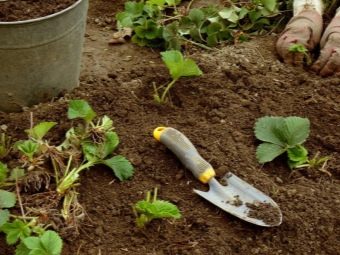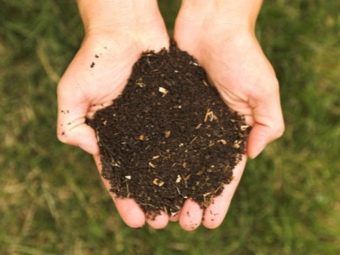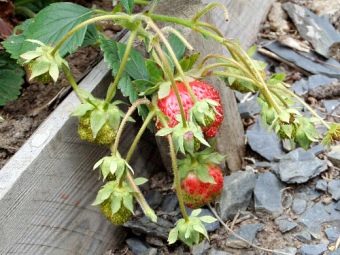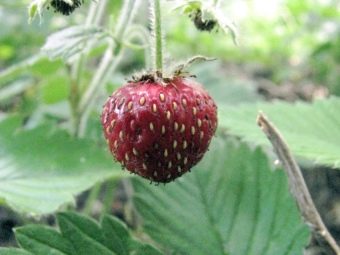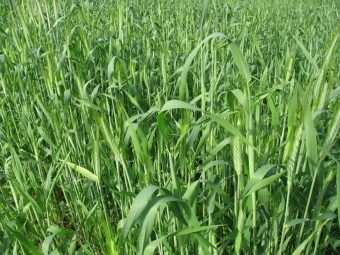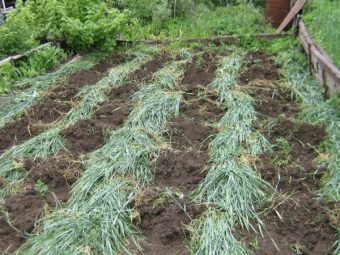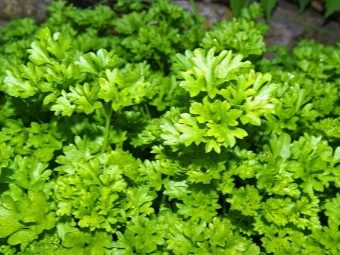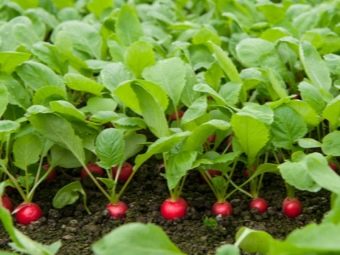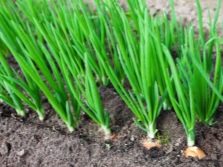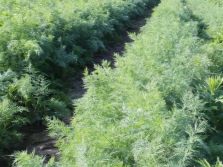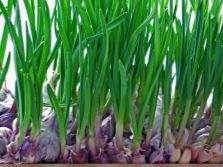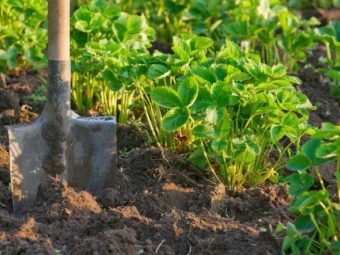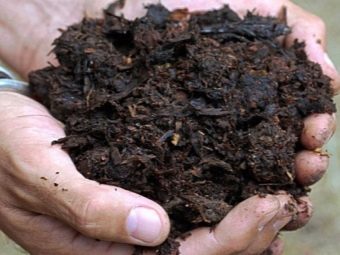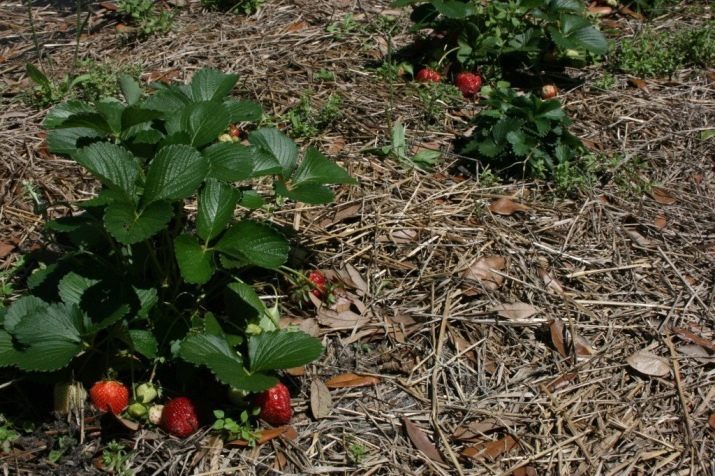What kind of soil loves strawberries and how to properly prepare?
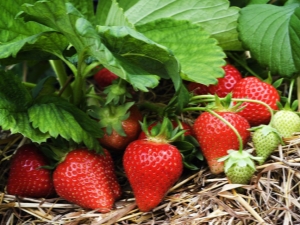
Strawberry is one of the most common crops and is present in many household plots.The plant is considered absolutely not fastidious, and can be grown on any soil. But when growing on depleted and heavy soils, crop yield decreases markedly, and the berries often lose their beautiful shape and lose their characteristic strawberry flavor.
Ground Requirements
Ideal for growing strawberries are light loamy or sandy soils with a high level of fertility and a non-acidic environment. An important requirement is the natural soil moisture, which directly depends on the level of groundwater. So, at the location of strawberry beds in the lowlands there is a risk of excessive moistening of the root system, causing the berries to become watery, and the plant itself can get a fungal disease. The optimum level of fertility is the soil, the humus content in which is 3% or more. If this figure is lowered, the strawberry does not feel very comfortable, responding to this by reducing the yield and changing the taste of the berries.
The best yields are observed on humus-rich soils. Such substrates contain a huge amount of organic compounds that are beneficial for the condition of strawberries. Good results are obtained by planting a culture on soddy soils. Such soils contain a large amount of organic matter and are distinguished by low acidity. The only disadvantage of such soils is their severity.
However, this problem is easily solved by diluting the turf substrate with sawdust or sand. To prepare such a mixture, it is required to pretreat the sawdust with urea and mix them with sod in a ratio of 1:10.
Sand for dilution of turf soil is better to choose large fraction and pre-cleaned. It is lightly dried in the sun, disinfected in an oven, and then in the same proportion combined with turf.
With regard to the use of peat, in this matter the opinions of agronomists are divided. Some agronomists strongly advise against its use due to the increased level of natural acidity, while others, on the contrary, insist on the mandatory addition of peat substrate to strawberry beds. Therefore, the decision on the feasibility of using peat additives is made individually and depends on the fertility of the land and the personal preferences of the owners. Anyway Before making the peat, it is recommended to dilute it with one glass of ash and 3 tbsp. l dolomite flour taken on a bucket of peat.
Strawberries do not like sandy and clay soils. The fact is that such soils dry quickly after watering and contain a minimal amount of nutrients. Culture, of course, will grow on them and even give a good harvest, but the taste of fruits will significantly lose the taste of berries from bushes growing on more fertile substrates. In addition, it should not be planted on acidic, alkaline, peat (without prior dilution) and podzolic substrates, as well as in light gray soils. The optimum for growing crops is considered a pH level of 5.5-6.5 units.
In addition to the chemical composition, the physical properties of the soil affect the normal growth and high yield of strawberries. Loose, water- and air-permeable areas that provide good ventilation of the soil and are not prone to waterlogging are considered as the ideal option. In addition, it should be noted that the cultivation of strawberries in one place for more than five years is not recommended. No matter how fertile and ideal the soil is, over time it is depleted and inhabited by pathogenic flora.
Therefore, it would be better to move the strawberry beds to a new place, and it will be possible to return to the old one in 5-6 years. This time is enough for the accumulation of the natural fertility of the soil and bringing its chemical composition in accordance with the natural balance.
Siderates and predecessors
Many people mistakenly believe that there is no particular difference between siderats and predecessors, but this is not so. Sideratami call plants that are intentionally planted in the beds, which plan to plant strawberry seedlings. Usually, early-flowering species are used, which immediately after the beginning of flowering, are plowed into the ground, carefully ground and mixed with the ground. The recommended plowing depth is 15 cm. After such events, the soil is actively saturated with nitrogen, proteins, sugars and starch, which have a beneficial effect on the development of the crops planted after the crops.
Vika, oats, phacelia, lupine and buckwheat are often used as siderats for strawberries. Good results are obtained by planting white mustard, which, unlike the above plants, is not made in early spring, but in autumn. Mustard is planted, left to winter, and after the plants bloom in the spring, they also plow into the ground and mix thoroughly. The choice of one or another siderat depends completely on what trace element it is necessary to enrich the earth. For example, planting legumes (wiki and lupine) makes it possible to enrich the soil with nitrogen, and white mustard serves as a source of phosphorus. Buckwheat will help feed the earth with potassium, and rape can replenish sulfur and phosphorus reserves.
Cultivated plants that previously grew in this area are called predecessors, and, in contrast to the green manure, they are grown for the purpose of obtaining a harvest. The best predecessors of strawberries are dill, garlic and radishes. Good results are obtained by planting crops after onions and parsley. Onions guarantee reliable protection against the appearance of most pests and parasites, and parsley excludes the appearance of slugs on the bed. The preliminary cultivation of cereals and legumes, which increase the level of soil fertility and saturate it with essential trace elements, is welcomed.
One of the most undesirable strawberry precursors is potatoes. This is due to the fact that after growing solanaceous trees, a large number of Colorado potato beetle larvae remain in the ground, which later threatens to destroy the strawberry root system and causes the inevitable destruction of the plantation.
In addition to sideratov and predecessors, neighbors have a great influence on the growth and development of strawberries. The most favorable is the neighborhood with beets and cabbage. These plants mutually benefit each other, and contribute to the creation of a comfortable microclimate at the site.
Soil preparation
It often happens that the soil at the dacha is far from ideal. In such a situation, you can adjust the composition of the land and prepare the plot for planting yourself. For this you need to perform a number of activities which will help the soil to return its former fertility in case of its loss, or will enrich the depleted soil with essential nutrients.
- The first stage of land preparation should be its digging Moreover, it is better to give up the use of a bayonet spade, and to dig the ground with the help of garden forks. At the same time, weed roots, large stones and mechanical debris are removed from the soil. Digging should be carried out to a depth of 20-25 cm. This allows you to raise on the surface of the laying of eggs of insect pests and pathogens that freeze out in the winter.
- After the earth has been carefully dug and cleaned, you can proceed to fertilizer. The best time for such a procedure is autumn, and a fertilized mullein or compost can be used as fertilizer. Some gardeners are advised to mix them with superphosphate or potassium chloride, taken from the calculation of 60 grams of superphosphate and 30 g of potassium salts per 10 kg of manure. This amount of fertilizer will be enough for one square of the area, so the final number of components is calculated based on the area of the plantation.
- If the soil has a high level of acidity, which is easy to determine by the growth of a belus sticking out of it, chamfer of field and horse sorrel, it is recommended chalking. To do this, for several years it is necessary to add 50 kg of lime to each hundred square meters of land.
- As spring supplements they bring a liquid mullein, diluted with water at a ratio of 1:10, or bird droppings, which are raised in a ratio of 1: 15. A week after the treatment, you can start planting green manure while making strawberry beds. The recommended width of the ridges is 60-80 cm. With a large amount of precipitation, the arrangement of inter-row drainage ditches is recommended, along which excess water will be drained outside the plantation.
- After burying sideratov, for several days the soil should plentifully spill, closely monitoring the absorption of water and preventing its stagnation.
- After landing, the ground above the roots is obligatory. mulched In addition to preserving moisture in the root zone and protecting the plants from winter freezing, mulch is an additional source of nutrients. The best material for mulching strawberries is fallen needles, humus, sawdust and peat.
- In August, after trimming the leaves of the soil fertilized ammofoskoy, a solution of wood ash or urea.
Useful tips
Experienced gardeners recommend another effective way to improve soil fertility. To do this, they remove the outer 8 cm of forest podzolic soils, form the same strata of them and stack them one upon another to a height of one meter. Then the collar is plentifully shed for several days, after which it is covered with polyethylene. To ensure proper ventilation in the film, small windows are pre-made.
As a result of a significant increase in temperature in the folded and covered with a film collar, the larvae of pests and fungi die, and the combustion of plant residues and pathogenic microorganisms begin to occur. If all actions were carried out correctly, then in 2-3 months you can get the soil, the most suitable for growing strawberries.
About what strawberry loves the soil and how to prepare it properly, see the next video.

